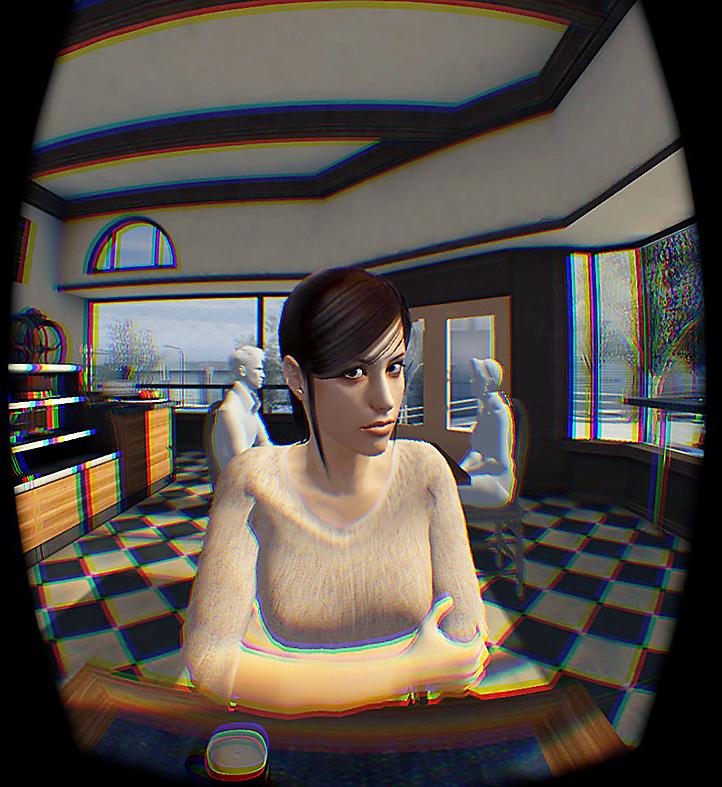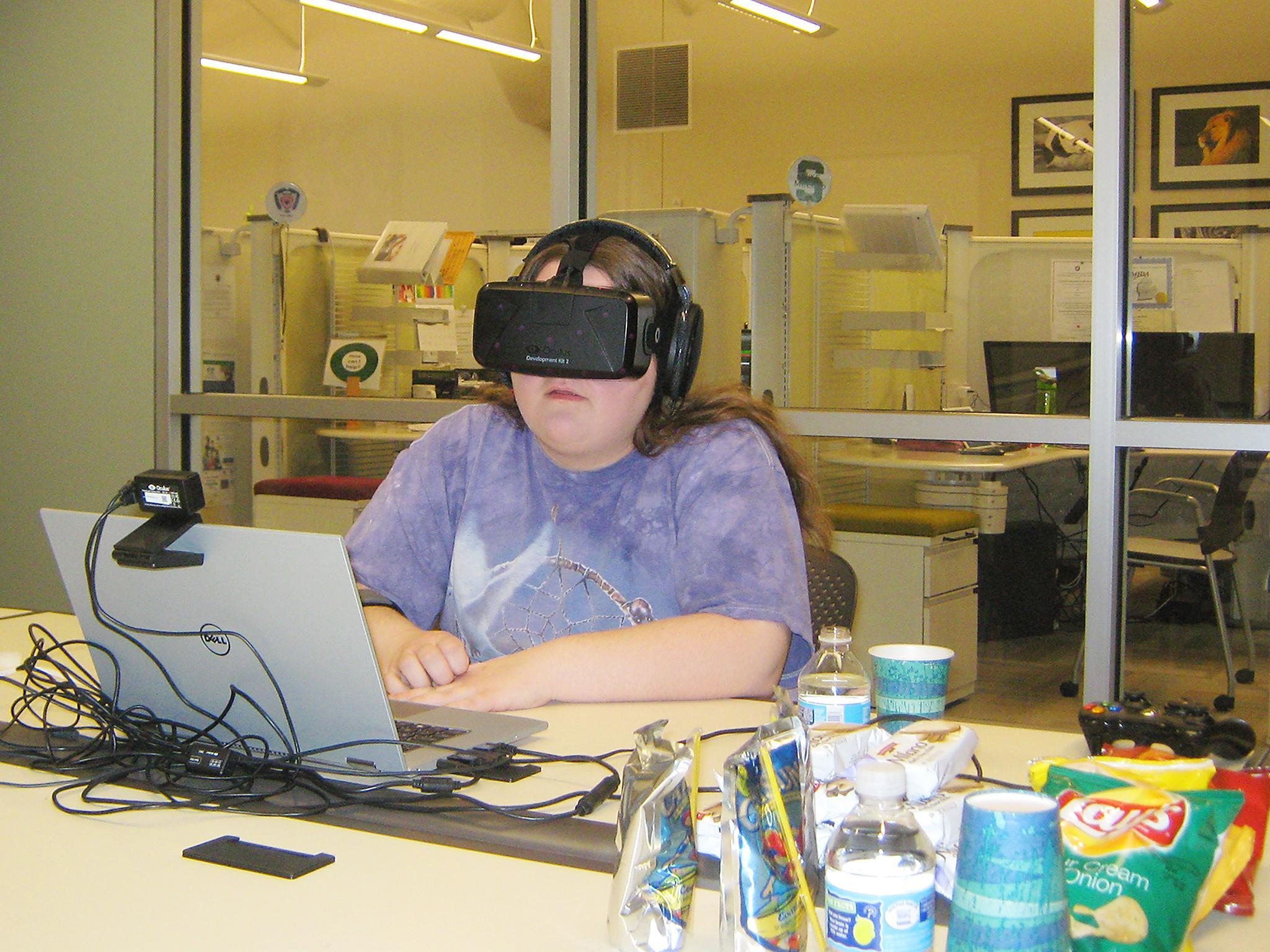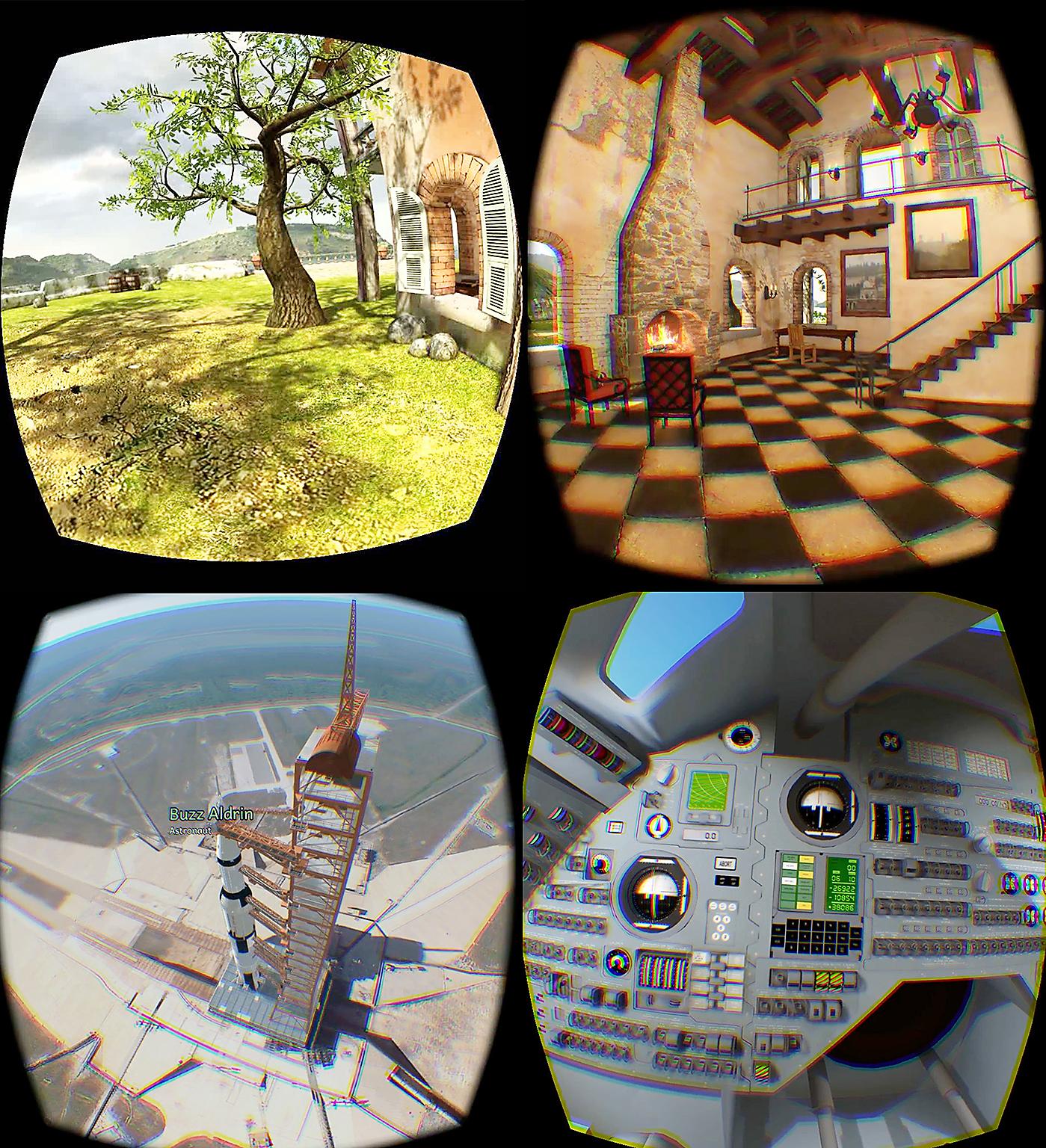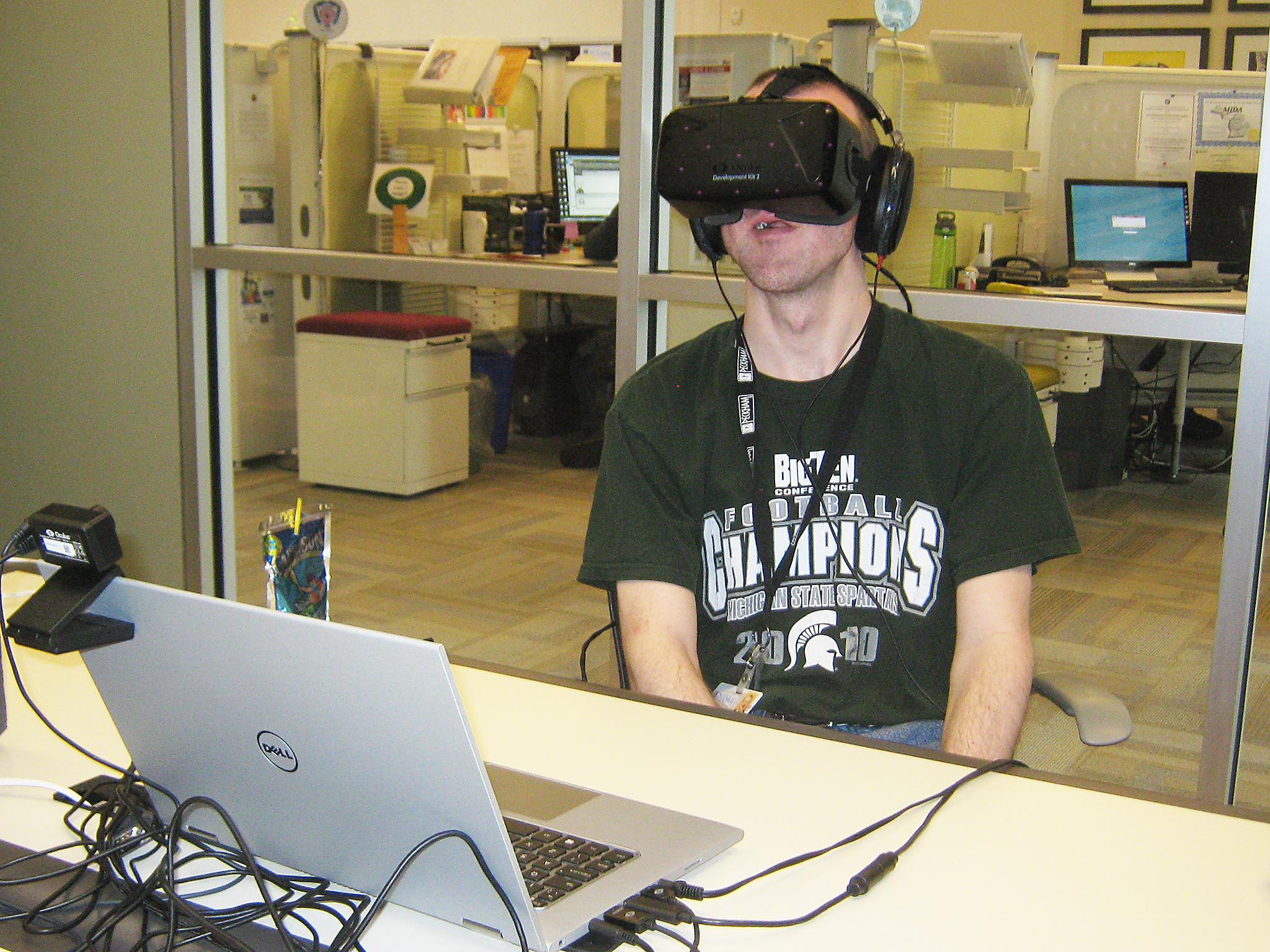Virtual reality may be a help to autistic children in the classroom
Virtual realities now have the possibilities to be turned into real life scenarios

I met a graphic designer named Kate last summer at one of my several locals (a ring of pubs form a cheerfully protective moat a certain distance from my house). Gaining my trust by agreeing that, yes, the design of my new business cards was indeed eye-glazingly synthetic, Kate went on to tell me she was earning her masters in virtual reality, as a means to better understand her autistic partner.
Now, I’ve been fascinated with the potentials of virtual reality ever since reading William Gibson’s novels and Jenny Holzer’s neon signs, but I’m also a hopeless romantic – and here was a woman shaping her entire professional education around the anomalies of her beloved. Although not personally present on the autistic spectrum, I undoubtedly deviate from the norm; however it’s never occurred to my past partners to try on my elegant if unorthodox shoes.
So Kate’s story not only moved me, but also led me to think about where we place ourselves, mentally and physically – and why. The desire for a sense of place within comfortable surroundings is innate to most living beings. If we cannot achieve this naturally, we scramble to find less traditional routes into belonging. The potential for virtual reality to be used as a two-way bridge between perceptual worlds has been discussed since its inception; why couldn’t it be used as a way to escape our Otherness?

I was unable to find Kate again, but a quick internet search of VR use in autism led me to Dr Nigel Newbutt, associate head of the department of design communication at UWE Bristol. For the past six years he’s been researching a range of virtual reality technologies for their potential in assisting autistic groups to break down perceptual and societal barriers. Recently this has involved the cutting edge technology that is Oculus Rift – Palmer Luckey’s vision of an affordable VR headset that provides tracking, 3D audio, and crazy high visual resolution. ‘If used appropriately,” Newbutt explains, “virtual reality can provide portals into a neurotypical world, and suggest ways to help navigate this world.”
The term “autism” was invented as a descriptive in 1912 by German psychiatrist Eugen Bleuler. The etymology of the label reflects how little the condition was then understood. Taken from the Greek “autos” (self), and “ismos” (action or state), it was meant to indicate “morbid self absorption”.
This description couldn’t be further off the mark. Autistic individuals actually experience sensory overload, due to inherent challenges in blocking out external stimuli – the complete opposite of self-absorption.
Janine Booth, activist, poet, and author of the book Autism Equality in the Workplace has coined her own phrase, “autie”, which she likes because it’s “light-hearted and positive”. “What I do not identify as is a “person with autism” 0 any more than as a woman I am a “person with femaleness,” Booth says. “It is something I am, not something I have.”

Since Bleuler’s time understanding of autism as a word has changed, but it is still largely viewed as a condition to be overcome rather than as an acceptable position on the human spectrum. When I ask Janine what she sees as the most widespread misapprehension concerning autism, she says: “That people think it is an impairment, rather than a difference.”
Unsurprisingly, the challenges autistic individuals face in filtering externals can lead to anything from mild anxiety to full blown panic attacks. The unpleasantness associated with such overwhelming experiences of the outside world can result in restricted and repetitive behaviours, fear of change, and general withdrawal.
In 1999, Sean Tejaratchi, urging people to take ownership of their surroundings, wrote that “advertising increasingly invades my environment instead of letting me come to it on my own terms, when I need it.” When I ask Janine what her individual Achilles’s heel is, perceptually speaking, she immediately replies: “Adverts in public spaces – especially moving ones.”
Unless born with the sensory equivalent of rhinoceros hide, most of us can empathise with this. The framework of contemporary life, its ubiquitous architecture and media, is essentially invasive and aggressive. The new corporate mafia bullies us incessantly and in every possible way, until we begin to feel like traumatised ATM machines.
The way auties describe how some spatial arrangements cause them anxiety and others put them at ease, match my experiences completely. This is because they actually reflect the healthy needs of any self-aware human being, if not those of property developers or city planners. Janine Booth describes her ideal exterior space as ‘Not too high-rise, with plenty of sky visible, not all houses identical, and lots of green space.’
Auties may not adhere to societal norms but their experiences may chime with greater sections of society than ever before. At least 16 per cent of the UK population now suffers from anxiety. Surely it’s now time to find more practical solutions and methods of bridging gaps in understanding and perception.
Dr Barbara Strickland agreed – back in 1996 she carried out one of the first studies to use VR as an autistic aid. Unfortunately, VR technology at the time was equal parts uncomfortable and unaffordable. With no change in sight, the virtual reality scene became suspended in theoretical amber. All promise and no reward, it made little progress and interest swiftly waned.
But recently virtual reality has resurfaced, in the fresh guise of Oculus Rifts’ sleek and affordable head–mounted display. As the buzz returned, so did Strickland’s theory. Using the new technology, Dr Newbutt undertook a 2016 study at Michigan State in which he observed its use by an autistic spectrum group, focusing on physical experience and relevance to real world situations.

A properly immersive virtual scenario can be an attractive learning environment because it takes the pressure off. Since software is programmed, it reacts consistently – in a way that humans almost never do. There’s also a lot less physical inflection involved in current VR animation than within real human interactions – body language and facial expressions are greatly simplified in avatars. Programmers may see this as a deficit, but for autistic spectrum individuals this simplification can help reduce confusion: it’s impossible to misread something that’s not there. Of course the most obvious safety net of any virtual environment is that mistakes made there have no real ramifications. Which of us doesn’t sometimes wish to live in a world where our mistakes don’t have consequences?
Outcomes of a different research program hint at the potential for the benefits of virtual practice to transfer to the real world. In a 2014 “Blue Room” study in Newcastle, wall projections provided virtual cognitive behavioural therapy in pre-imagined scenarios for autistic children with specific phobias. Long-term follow-ups showed lasting improvements, with four children overcoming their phobias completely.
These studies have laid a lot of groundwork, but more is called for. Can the experiences in the virtual reality scenarios be transferred usefully to real life, or as Newbutt notes, ‘is there a risk of staying in… immersing in virtual reality without any bridging of awareness and skills to the real world?” Plans for a longer study using a larger test group at Michigan State will hopefully shed some light.
The potential for related VR applications – if used sensitively and intelligently – is vast: in classrooms, it could provide a flexible and affordable support scheme to autistic spectrum children at key stages in their development. Possible learning scenarios are similarly limitless: for instance, Newbutt envisions a London Underground in which the individual could customise passengers according to comfort and confidence levels. As someone who fights panic attacks when the suffocating sardine tin known as The Tube pauses mid-station, I ask: will someone please enable these options in real life?
Other VR settings will express and teach social “norms” – especially those involving spatial awareness, a recurring issue for autistic individuals. This could help increase physical and social safety across a wide range of scenarios: crossing roads, coping with traffic, sitting in buses, which urinal to use in the gents in order to avoid dangerous misunderstandings – anything, in fact, that might help to manage expectations and behaviours in potentially sensitive situations.
Tacitly accepted social conventions can often seem to auties like something they’ve missed the meeting on. To be honest, I feel the same about a lot of things. Take, for instance, the world of text messaging. While others blithely exchange communications, I text novellas and blatantly misuse emojis, assigning each my own personal meaning rather than the one everyone else seems to have agreed upon. (Who would have thought a tiny rainbow could cause such havoc?)
All of this aside, it’s vitally important that VR technology is not seen as a device with which to “cure” autistic individuals. As Newbutt says, “No one wants to be ‘fixed’”. Designers such as Kate are creating VR scenarios that increase neurotypical awareness of, and empathy with, the autie perspective. The UK National Autistic Society has released an app called “Too Much Information” that invites us to walk a virtual mile in autistic spectrum perception. Companies like Specialiststerne approach autistic qualities as desirable, matching auties with companies that value their unique capabilities.
As Dr Newbutt says of his VR training scenarios, “their real potential is for those on the autistic spectrum to gain enough understanding of the neurotypical world to be able to choose what to take on in their pursuit of self-sufficiency and happiness. We are gradually shifting perspectives from deficits to strengths.” Paradoxically, learning to cope with the very real difficulties of our everyday environments via virtual reality could be the first step in examining, challenging, and re-humanising the motives and structures of contemporary civilisation.
This is not mere bridging; it is empowerment.
Dr Nigel Newbutt will be speaking at the Daughters of Charity Technology and Research Into Disability (Doctrid) conference, hosted by the University of Limerick, in April 2017, about the potential positive impact of HMD technology on a range of disability groups in a variety of areas
Join our commenting forum
Join thought-provoking conversations, follow other Independent readers and see their replies
Comments
Bookmark popover
Removed from bookmarks